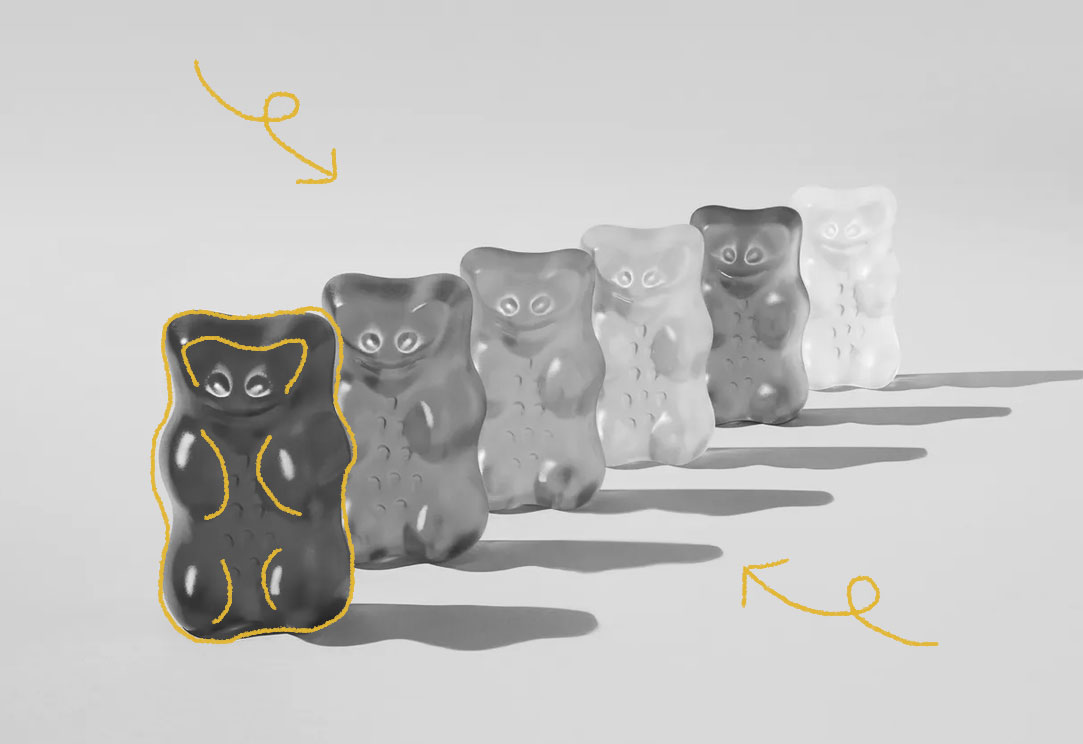Gummy bears were invented by German confectioner Hans Riegel Sr., who started his company, Haribo, in 1920. Riegel debuted his creation, which he called the Dancing Bear (Tanzbären in German) in 1922. He modeled his candies after the live dancing bears that once entertained children at festivals across Europe. Haribo Gummy Bears were popular in the 1930s, but production all but ceased during World War II. Riegel’s wife ran the company after his death in 1945, and his sons took over the company after the war. The company quickly expanded in the postwar world and Haribo notably became one of the first German companies to advertise on television. In the 1960s, the company rebranded its Dancing Bears to the Goldbears we are familiar with today. Haribo gummy bears arrived in the United States in 1982. To compete in the American market, Haribo updated its packaging to the familiar golden bag and also updated its flavors (the gummies are currently available in an assortment of raspberry, lemon, strawberry, pineapple, and orange flavors). The gummies quickly caught on and in 1985, Disney began to air a TV show called Adventures of the Gummi Bears. While the company has faced some controversy and accusations, including concerns about the alleged use of forced labor under the Nazi regime during World War II (which Haribo has denied), the brand continues to thrive today and Haribo Gummy Bears are now available in over 100 different countries.

Your go-to guide for weird history facts
Subscribe to the FREE daily email that makes learning about history fun.


